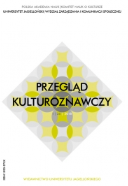PROJEKTANTKI I PERFORMERKI PRZEDWOJENNEGO OSIEDLA ŻOLIBORZ
DESIGNERS AND PERFORMERS IN ŻOLIBORZ NEIGHBORHOOD IN INTERWAR PERIOD
Author(s): Magdalena Matysek-ImielińskaSubject(s): Gender Studies, Architecture, Interwar Period (1920 - 1939)
Published by: Wydawnictwo Uniwersytetu Jagiellońskiego
Keywords: modernism; emancipation; women; participation; architecture;
Summary/Abstract: It is difficult to list all exceptional women who lived in Żoliborz neighborhood between World Wars. For the above reason, I will not be bold enough to write a collective biography. However, it is worth underlining, that both women and the neighborhood equally benefited from such coexistence. Despite a left wing and social character of Warsaw Housing Association, its space and climate is obviously a masculine projection, however, it is legitimate to hypothesis, that it resulted in the preparation of favorable conditions for the development of urban, public and domestic activity of women living in the neighborhood. On the other hand, the committed architecture “tailored for human”, concern for conditions for women’s self-development, the shape of the neighborhood “tailored for children” and formation of new urban lifestyles, were all the contribution of women, whom I called the designers of life in Żoliborz. I do not refer here to a literary meaning of designers, as a term which brings associations towards architecture or design. Żoliborz in this respect, should be perceived in a larger scale as a social experiment, an educational and emancipative project, meant for, developed and fl exibly introduced to workers, women and children. These three groups were the subject of experiments conducted by the creators of a social neighborhood in order to test a new, urban culture, based on “a culture of coexistence”, and also new styles of living. If the neighborhood of Żoliborz is perceived as an educational and emancipative project, then we should raise two important aspects: education and projectivity. Therefore, while writing about the women of Żoliborz, who actively co-created new lifestyles and fought for their rights to the city, I will refer to them as designers. I also asked about educational dimension of the neighborhood in order to draw attention to the question stated by Jacques Rancière, about participation or emancipation. In this context it is necessary to analyse the role of women. Were they indeed the designers of the reality of Żoliborz or were they only a subject of masculine educational strategies? The question is legitimate, because, as pinpointed by Marta Leśniakowska, emancipative postulates of male founders of Warsaw Housing Association were merely a facade, which veiled a constant male domination.
Journal: Przegląd Kulturoznawczy
- Issue Year: 34/2017
- Issue No: 4
- Page Range: 521-536
- Page Count: 16
- Language: Polish

